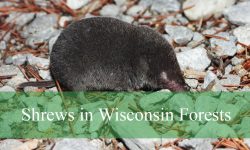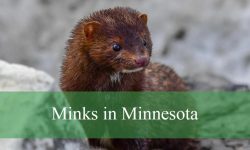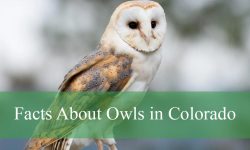While the Northern Cardinal is the only true cardinal species (Cardinalis cardinalis) commonly found in Florida, the state hosts a variety of other vibrant songbirds within the Cardinalidae family, including tanagers, buntings, and grosbeaks. These birds contribute to Florida’s rich avian diversity and are a delight for birdwatchers and nature enthusiasts alike.
Here’s a list of notable cardinal species you might encounter in Florida
Cardinal Species Commonly Found in Florida
Northern Cardinal (Cardinalis cardinalis)
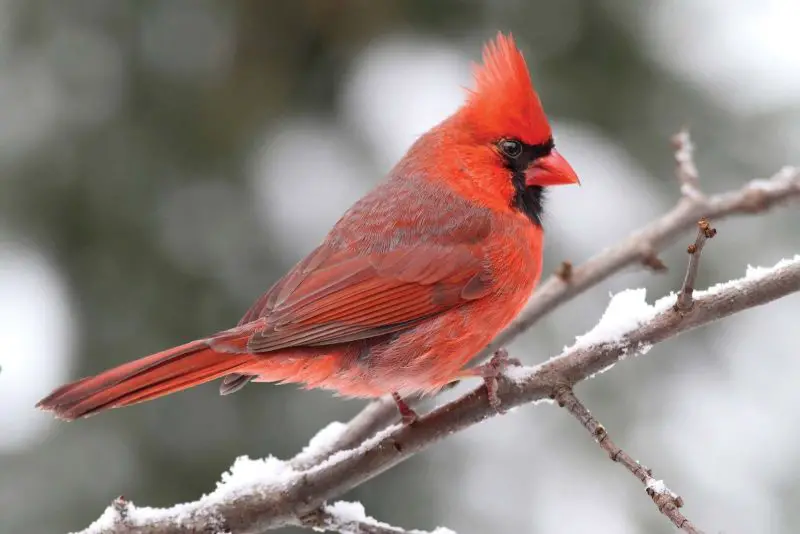
The Northern Cardinal is one of the most iconic and easily recognizable birds in Florida. Males are adorned in brilliant red plumage with a striking black mask surrounding their face and throat, while females are more subtly colored in warm brown with reddish highlights on the wings, tail, and crest. Both sexes have a prominent crest and a short, stout orange bill that is ideal for cracking seeds. Their rich, whistling songs are often heard throughout the day, making them one of the most vocal backyard birds in the region.
In Florida, Northern Cardinals are year-round residents and commonly found in a wide variety of habitats. They frequent forest edges, dense shrublands, gardens, and suburban yards, often nesting in low bushes or tangled thickets. These birds are highly adaptable and will readily visit bird feeders, especially those offering sunflower seeds, suet, or berries. They are also known for being territorial, particularly during the breeding season, when males may aggressively defend their nesting area.
Cardinals are monogamous and often mate for life. During courtship, males may feed females beak-to-beak in a touching display of bonding. Their nests are usually built in dense vegetation, and they typically raise two to four broods each year in Florida’s warm climate. Young cardinals are duller in color but develop their adult plumage after a few months. The Northern Cardinal’s enduring presence and melodic song have made it a favorite among birdwatchers and nature lovers alike.
Summer Tanager (Piranga rubra)
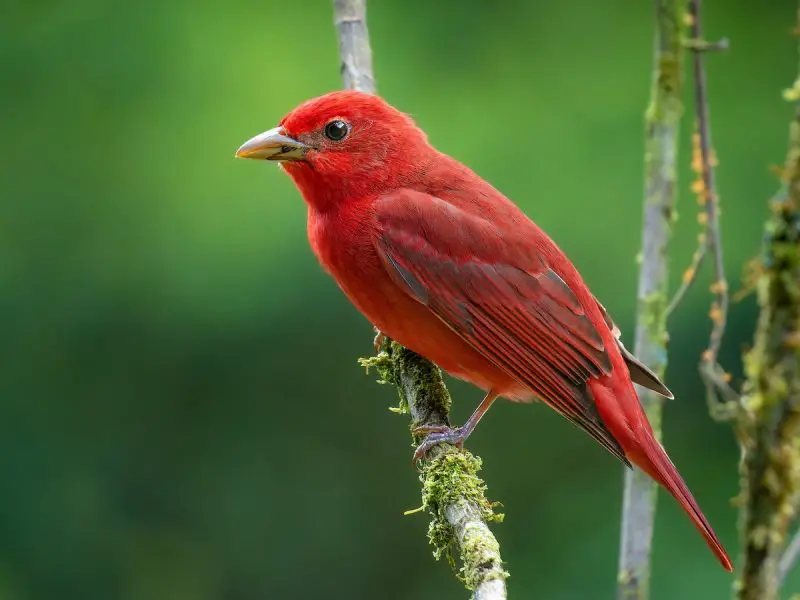
The Summer Tanager is a medium-sized songbird known for its vibrant, uniform coloring and subtle elegance. Males are completely red from head to tail, lacking any streaks or wing bars, which distinguishes them from other red birds in the region. Females and immature birds are equally beautiful, displaying soft shades of yellow or orange. Their appearance is accompanied by a sweet, robin-like song and a distinctive “pit-ti-tuck” call, which helps in identifying them among the treetops.
In Florida, Summer Tanagers are mainly summer breeders in the northern and central parts of the state, while they pass through the rest of the state during migration. They prefer open woodlands, especially those with tall deciduous trees such as oaks and pines. These birds are particularly fond of consuming wasps and bees, capturing them in midair and then removing the stinger by rubbing the insect against a branch before eating it. They also supplement their diet with various fruits and berries, especially during migration.
Unlike some more conspicuous birds, Summer Tanagers are often hidden within the forest canopy, making them a challenge to spot despite their bright coloration. They nest relatively high in trees, where females construct shallow cup-shaped nests and incubate the eggs alone. Their southward migration in late summer takes them to Central and South America, where they spend the winter months. In Florida, birders are most likely to see them during their spring return or fall departure, when they stop to rest and feed.
Scarlet Tanager (Piranga olivacea)

The Scarlet Tanager is a striking species that brings a splash of vivid color during migration through Florida. Breeding males are unmistakable with their brilliant scarlet bodies and jet-black wings and tails, while females and non-breeding males are olive-yellow with darker wings. This stark contrast between sexes is typical of the species. Their song is a burry, robin-like melody, and their call is often described as a sharp “chip-burr,” which can help in locating them in dense foliage.
These birds are not year-round residents in Florida but can be observed during spring and fall migrations as they travel between their breeding grounds in the northeastern United States and their wintering areas in South America. During migration, they favor wooded areas, including deciduous forests, mixed woodlands, and large parks with mature trees. They feed primarily on insects such as caterpillars, beetles, and spiders, but also consume fruit when insects are less available.
The Scarlet Tanager is a species that tends to remain high in the forest canopy, often making them difficult to see despite their vivid plumage. They are solitary and secretive during migration, stopping briefly in Florida to rest and refuel before continuing their journey. Birdwatchers hoping to catch a glimpse of a Scarlet Tanager in Florida need to be observant during peak migration months, especially in areas with dense tree cover and plentiful food resources.
Indigo Bunting (Passerina cyanea)
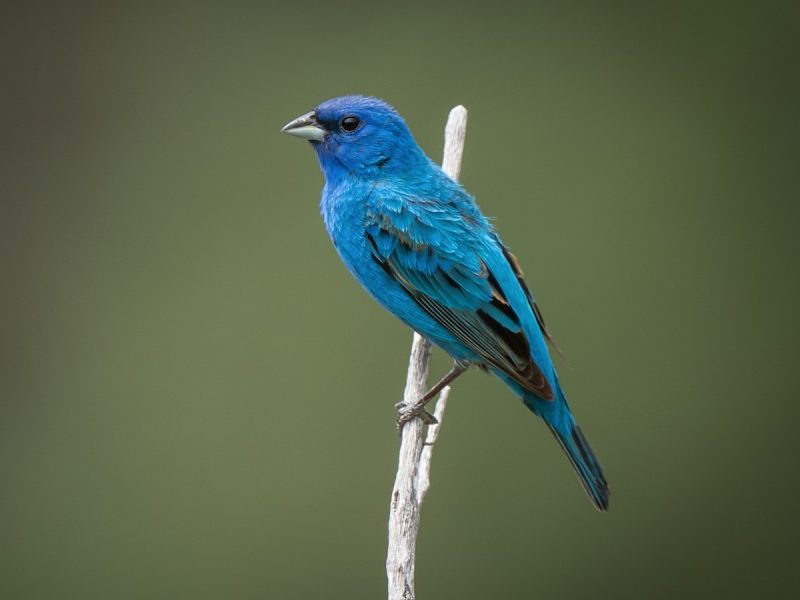
The Indigo Bunting is a small, dazzling bird that brings a burst of color to Florida’s landscapes during the migration and breeding seasons. Breeding males are deep, almost electric blue with darker wings and tail, a color that appears especially brilliant in sunlight. Females and juvenile birds are much less conspicuous, showing warm brown plumage with subtle streaking and no blue coloration. Indigo Buntings are known for their cheerful, rapid songs that sound like a musical warble.
In Florida, these buntings breed in the northern part of the state and migrate through other regions in spring and fall. They prefer open habitats with scattered shrubs, such as old fields, hedgerows, woodland edges, and overgrown roadsides. Their diet consists mainly of seeds and insects, and they can often be seen hopping along low vegetation or fluttering to catch flying insects mid-air. During migration, they may also visit feeders offering small seeds such as millet.
Indigo Buntings navigate using the stars during migration, a remarkable behavior that has made them the focus of many scientific studies. Males sing persistently to defend their territory and attract mates, often from exposed perches like treetops or tall shrubs. These birds tend to stay low in the vegetation, making them slightly easier to observe than some other canopy dwellers. Though small in size, their vivid color and joyful song make the Indigo Bunting a favorite among bird enthusiasts in Florida.
Painted Bunting (Passerina ciris)
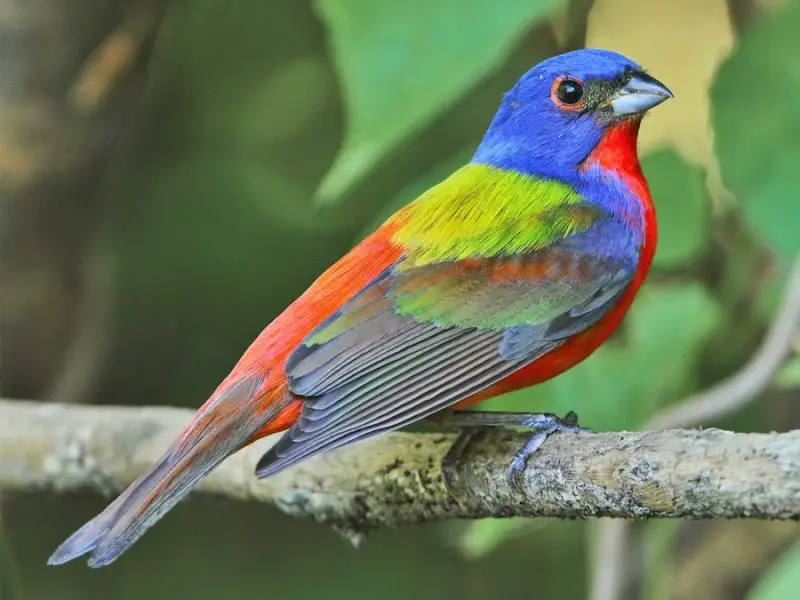
The Painted Bunting is one of the most striking and vividly colored birds in Florida. Adult males are easily recognized by their kaleidoscope of colors: a royal blue head, bright red underparts, and lime green back and wings. Females and juveniles, while less flamboyant, possess their own beauty, displaying a rich green plumage with a delicate yellow eye ring. This contrast in coloration makes the species relatively easy to identify in the field, especially during the breeding season.
In Florida, Painted Buntings are primarily found in the northern and northeastern regions, where they breed during the spring and summer months. Their preferred habitats include shrubby thickets, woodland edges, coastal hammocks, and residential gardens with dense vegetation. These birds are shy and often remain hidden in the foliage, although males may perch conspicuously when singing to defend their territory or attract a mate. Their song is a sweet, high-pitched warble that can often be heard before the bird is seen.
Painted Buntings are granivorous, feeding primarily on seeds during most of the year, but they also consume insects, especially while raising young. Backyard feeders stocked with millet can attract them, particularly during migration and in suitable breeding areas. Conservation concerns have arisen due to habitat loss and illegal trapping, but they continue to be a sought-after species by birdwatchers. In Florida, catching a glimpse of a Painted Bunting is always a special and memorable event.
Blue Grosbeak (Passerina caerulea)
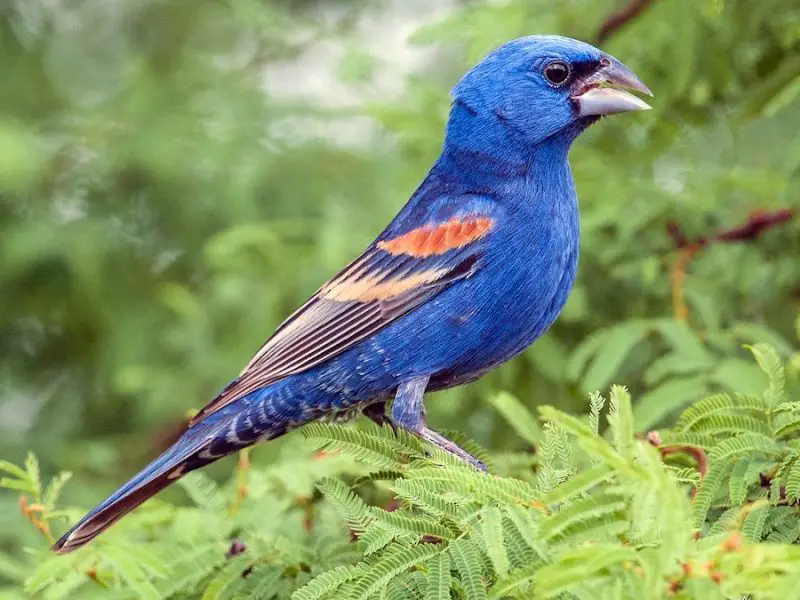
The Blue Grosbeak is a robust, medium-sized songbird that stands out due to its rich indigo-blue plumage and distinctive chestnut wing bars. Males are especially eye-catching with their deep, velvety blue feathers, while females exhibit a more subdued brown coloring, often with bluish tones on the wings and tail. Their large, conical beaks are well-adapted for cracking seeds, and their soft, warbling songs are commonly heard during the breeding season.
In Florida, Blue Grosbeaks breed mainly in the northern and central regions, favoring brushy habitats such as overgrown fields, woodland edges, and roadside thickets. They are somewhat secretive, often staying low in vegetation, but can be observed perched in the open while singing or foraging. Their presence is typically seasonal, with sightings most frequent from late spring through early fall, when they are actively nesting and raising young.
These birds forage on the ground or in low shrubs for seeds and insects. During migration, they may expand their diet to include berries and other plant material. Blue Grosbeaks build cup-shaped nests hidden in dense foliage, where females incubate the eggs while males guard the territory. Though not as widely known as some other songbirds, they are a treasured find among birdwatchers in Florida due to their stunning appearance and melodious calls.
Rose-breasted Grosbeak (Pheucticus ludovicianus)
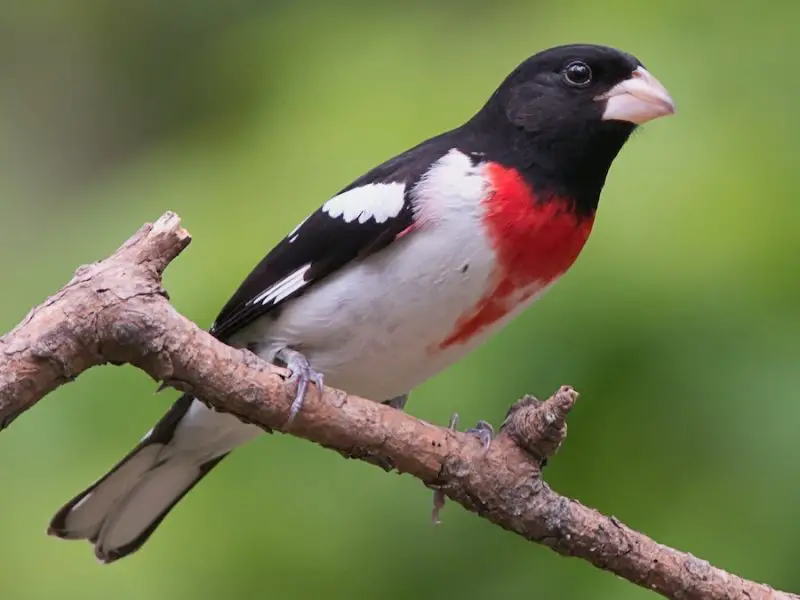
The Rose-breasted Grosbeak is an elegant songbird with a striking appearance, particularly in males. Adult males feature bold black upperparts, a white belly, and a brilliant rose-red patch on the chest that looks like a splash of paint. Females and immature birds are more muted in color, showcasing brown streaked plumage with prominent white eyebrows and mottled underparts. Their large, pale bills are adapted for seed-eating and are a helpful field mark for identification.
In Florida, the Rose-breasted Grosbeak is primarily a migratory visitor, seen during spring and fall as it travels between its breeding grounds in the northern U.S. and Canada and its wintering habitats in Central and South America. During migration, it frequents deciduous forests, wooded parks, gardens, and even backyard feeders, especially those offering sunflower seeds or fruit. They are known for their melodious, robin-like song, which males often sing from high perches during the breeding season.
Although they do not breed in Florida, the state provides important stopover habitat for resting and feeding during migration. Their presence in Florida is usually brief but noticeable, as birders eagerly watch for the vivid males and subtly beautiful females. With increasing habitat changes along their migratory route, preserving Florida’s green spaces remains vital for this species’ continued success during its long journeys.
Dickcissel (Spiza americana)

The Dickcissel is a sparrow-like songbird with a striking appearance and an unmistakable voice. Breeding males are easily identified by their yellow chest, black throat patch in a “V” shape, and grayish-brown upperparts. Females and immature birds lack the black bib but still show the yellowish chest and overall sparrow-like appearance. These birds are named after their loud, buzzy song that sounds like “dick-dick-cissel,” which is frequently repeated from fence posts or tall weeds.
Though common in the central United States, the Dickcissel is considered a rare and irregular visitor to Florida. Most sightings in the state occur during migration, especially in the spring and fall. During these periods, Dickcissels can be found in open grasslands, weedy fields, and sometimes at feeders in rural or agricultural areas. They travel in small flocks and are often seen feeding on seeds and insects as they prepare for or recover from long flights.
Dickcissels are ground nesters in their breeding range and show a strong preference for prairie-like environments. While Florida doesn’t host breeding populations, its open countryside and preserved grasslands occasionally attract migrating individuals. Birders hoping to see a Dickcissel in Florida often need a bit of luck and a keen eye, as these birds blend well into their surroundings and appear sporadically each year.
Red-headed Woodpecker (Melanerpes erythrocephalus)

The Red-headed Woodpecker is a visually stunning bird with a bold color pattern that makes it stand out in Florida’s woodlands. It has a deep crimson-red head, snowy white underparts, and contrasting black back and wings with large white wing patches. Unlike many other woodpecker species, both sexes are similarly colored, making it easy to identify. Their flight is strong and undulating, often described as acrobatic and crow-like.
This species is a year-round resident in parts of Florida, especially in the Panhandle and northern regions, where it inhabits open forests, pine savannas, swamps, and groves of dead or dying trees. They are highly adaptable and often utilize human-modified landscapes such as orchards, golf courses, and even cemeteries. Red-headed Woodpeckers are known for their unique behavior of storing food—such as insects, nuts, and even small vertebrates—in tree bark crevices, a behavior called caching.
They are cavity nesters, often choosing dead trees or snags in which to excavate holes. The Red-headed Woodpecker has experienced population declines in some areas due to habitat loss and competition for nesting sites. In Florida, efforts to preserve old-growth forests and manage pine woodlands have been essential to maintaining their populations. Their vivid appearance and distinctive drumming make them a favorite among birdwatchers and nature photographers across the state.


